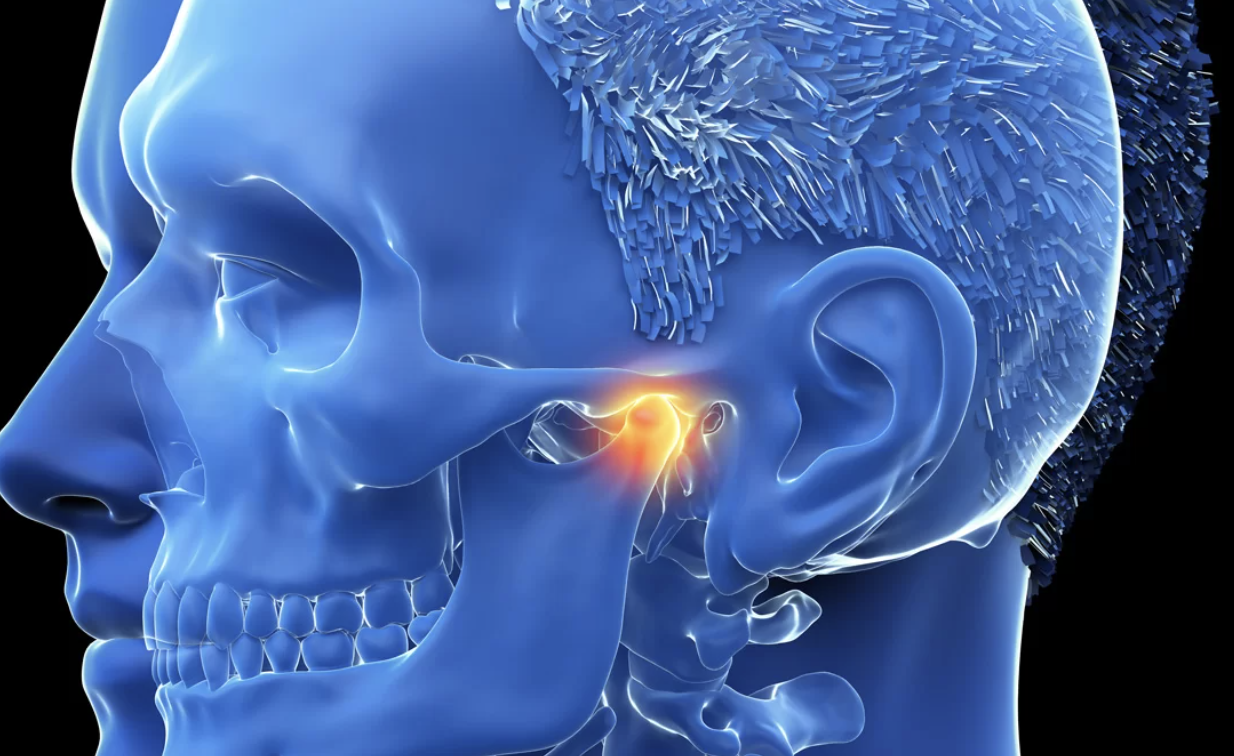The temporomandibular joint (TMJ) acts as a sliding hinge, connecting your jawbone to your skull. Disorders of the TMJ (TMD) can cause pain in your jaw joint and in the muscles that control jaw movement. The exact cause of a person’s TMJ disorder is often difficult to determine. It can be due to a combination of factors, such as genetics, arthritis, or jaw injury. Some people who have jaw pain also tend to clench or grind their teeth (bruxism), though many people habitually clench or grind their teeth and never develop TMJ disorders.
Symptoms of TMJ Disorders
The symptoms of TMJ disorders can be varied and may include:
– Pain or tenderness in the jaw, especially at the area of the joint
– Aching pain in and around your ear
– Difficulty or discomfort while chewing
– Aching facial pain
– Locking of the joint, making it difficult to open or close your mouth
– A clicking sound or grating sensation when you open your mouth or chew. This may or may not be painful.
TMJ disorders can also lead to headaches, neck stiffness, and even dizziness in some cases. The discomfort and pain can be temporary or last for many years, affecting either one or both sides of the face.
How Massage Can Help
Massage therapy has been shown to be an effective treatment for relieving TMJ pain. It can help in several ways:
- Relieving Muscle Tension:
One of the primary benefits of massage therapy is its ability to relieve muscle tension. This can be particularly beneficial for those with TMJ disorders, as muscle tension around the jaw and neck is a common symptom. Massage techniques can help relax these muscles, potentially reducing pain and increasing mobility. - Increasing Blood Flow:
Massage therapy can increase blood circulation in the tissues around the TMJ. Improved blood flow can help with the removal of toxins and increase the flow of nutrients to the muscles, which can aid in the healing process and reduce inflammation. - Improving Range of Motion:
For those experiencing stiffness or locking of the jaw, massage therapy can help improve the range of motion. By working on the soft tissues around the TMJ, massage can reduce stiffness and make it easier to open and close the mouth. - Reducing Stress:
Stress can be a significant factor in TMJ disorders, as many people tense their facial and jaw muscles when under stress. Massage therapy can help reduce stress and promote relaxation, which in turn can help reduce the unconscious clenching or grinding of teeth that contribute to TMJ pain. - Promoting Overall Well-being:
Beyond the physical benefits, massage therapy can contribute to an overall sense of well-being. This can be particularly beneficial for individuals dealing with the chronic discomfort associated with TMJ disorders.
Types of Massage for TMJ Disorders
Several types of massage therapy can be beneficial for TMJ disorders, including:
- Myofascial Release:
This technique involves applying gentle, sustained pressure into the myofascial connective tissue restrictions to eliminate pain and restore motion. - Trigger Point Therapy:
This focuses on releasing trigger points, which are areas of tight muscle fibers that can form in muscles after injuries or overuse. - Swedish Massage:
While more general, Swedish massage can help with overall stress and tension reduction, which can indirectly benefit those with TMJ disorders.
It’s important for individuals with TMJ disorders to consult with a healthcare professional before starting any new treatment regimen, including massage therapy. A professional can help determine the most appropriate treatment based on the individual’s specific condition and health history. Additionally, working with a massage therapist who has experience in treating TMJ disorders can ensure that the massage techniques used are both safe and effective.
Reference:
https://health.clevelandclinic.org/stubborn-tmj-pain-try-trigger-point-massage-and-jaw-exercises
